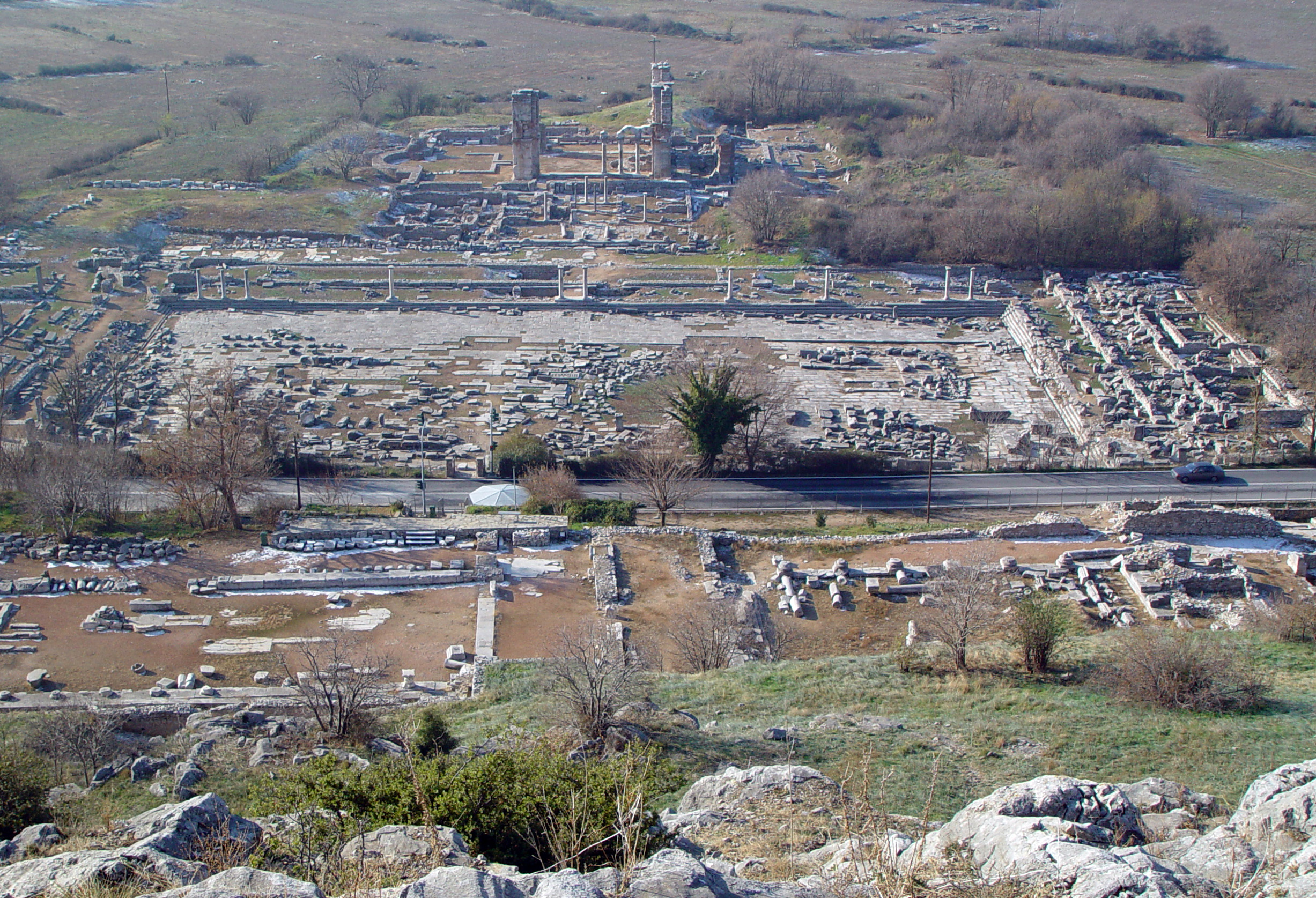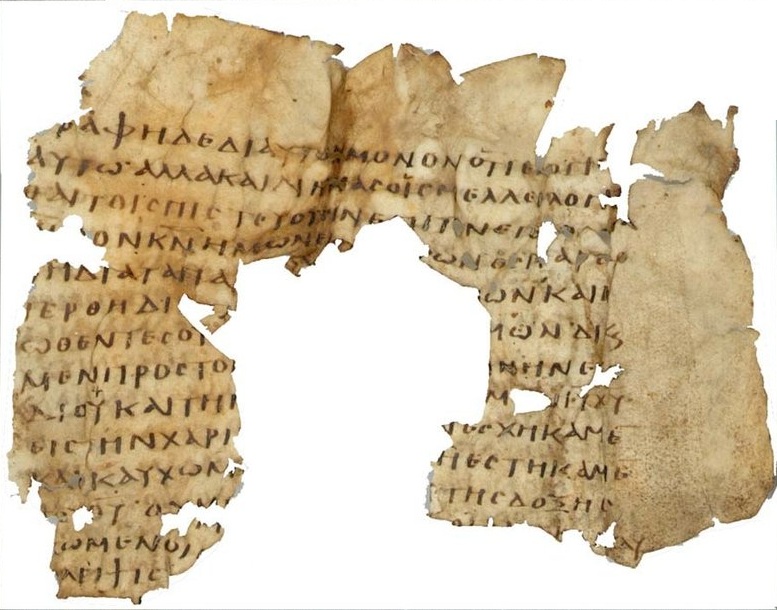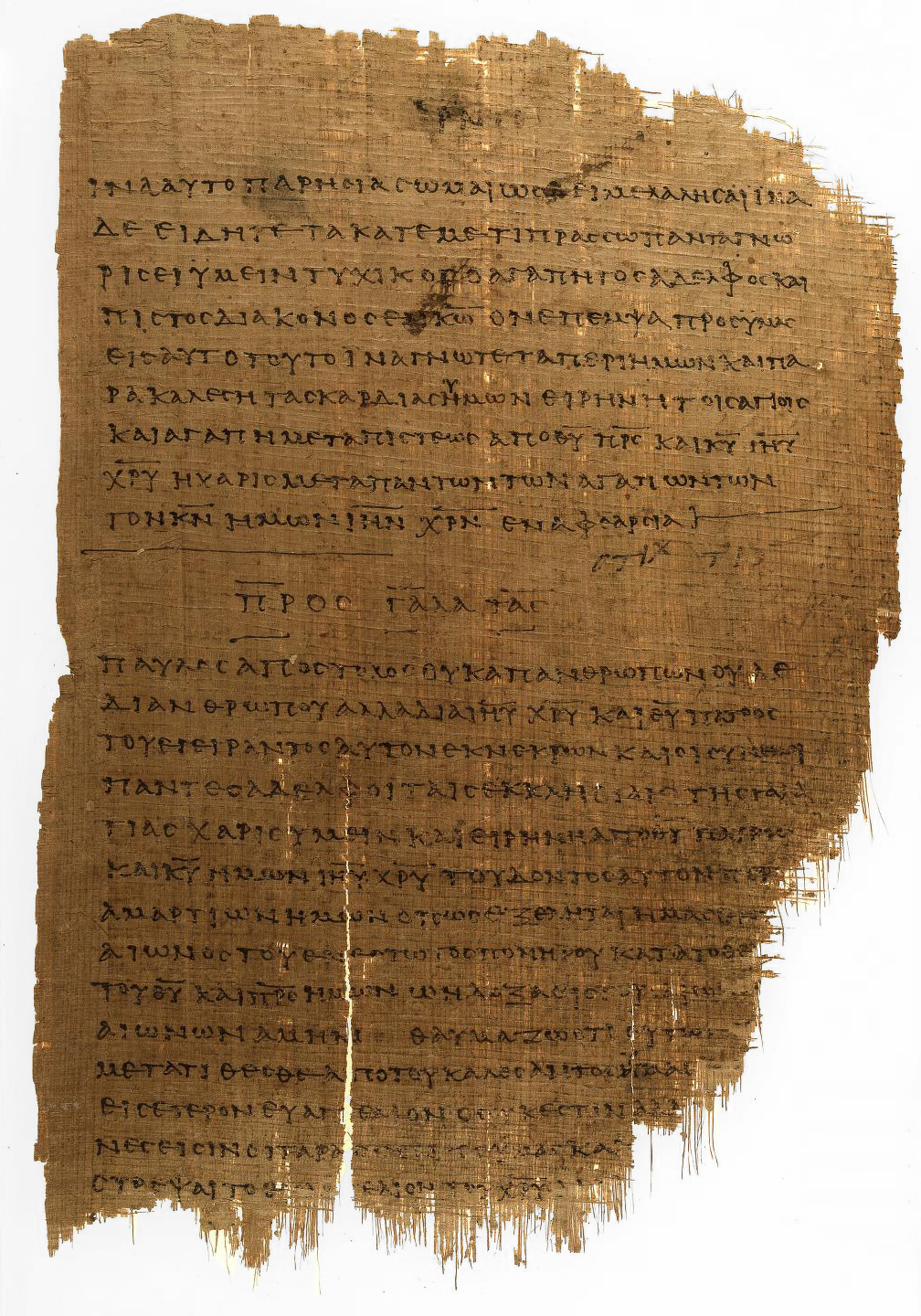|
Codex Coislinianus
Codex Coislinianus designated by Hp or 015 (in the Gregory-Aland numbering), α 1022 ( Soden), was named also as ''Codex Euthalianus''. It is a Greek uncial manuscript of the Pauline epistles, dated palaeographically to the 6th century. The text is written stichometrically. It has marginalia. The codex is known for its subscription at the end of the Epistle to Titus. The manuscript was divided into several parts and was used as raw material for the production of new volumes. The codex came to the attention of scholars in the 18th century (after edition of Montfaucon). Currently it is housed in several European libraries, in: Paris, Athos, Saint Petersburg, Kiev, Moscow, and Turin. It is cited in all critical editions of the Greek New Testament. Contents The surviving leaves of the codex contain: : 1 Cor. 10:22–29, 11:9–16; : 2 Cor. 4:2–7, 10:5–11:8, 11:12–12:4; : Gal. 1:1–10, 2:9–17, 4:30–5:5; : Col. 1:26–2:8, 2:20–3:11; : 1 Thes. 2:9–13, 4:5� ... [...More Info...] [...Related Items...] OR: [Wikipedia] [Google] [Baidu] |
Pauline Epistles
The Pauline epistles, also known as Epistles of Paul or Letters of Paul, are the thirteen books of the New Testament attributed to Paul the Apostle, although the authorship of some is in dispute. Among these epistles are some of the earliest extant Christian documents. They provide an insight into the beliefs and controversies of early Christianity. As part of the canon of the New Testament, they are foundational texts for both Christian theology and ethics. Most scholars believe that Paul actually wrote seven of the Pauline epistles (Galatians, Romans, 1 Corinthians, 2 Corinthians, Philemon, Philippians, 1 Thessalonians), while three of the epistles in Paul's name are widely seen as pseudepigraphic (First Timothy, Second Timothy, and Titus).New Testament Letter Structure fro [...More Info...] [...Related Items...] OR: [Wikipedia] [Google] [Baidu] |
Moscow
Moscow ( , US chiefly ; rus, links=no, Москва, r=Moskva, p=mɐskˈva, a=Москва.ogg) is the capital and largest city of Russia. The city stands on the Moskva River in Central Russia, with a population estimated at 13.0 million residents within the city limits, over 17 million residents in the urban area, and over 21.5 million residents in the metropolitan area. The city covers an area of , while the urban area covers , and the metropolitan area covers over . Moscow is among the world's largest cities; being the most populous city entirely in Europe, the largest urban and metropolitan area in Europe, and the largest city by land area on the European continent. First documented in 1147, Moscow grew to become a prosperous and powerful city that served as the capital of the Grand Duchy that bears its name. When the Grand Duchy of Moscow evolved into the Tsardom of Russia, Moscow remained the political and economic center for most of the Tsardom's history. When th ... [...More Info...] [...Related Items...] OR: [Wikipedia] [Google] [Baidu] |
Ephesians
The Epistle to the Ephesians is the tenth book of the New Testament. Its authorship has traditionally been attributed to Paul the Apostle but starting in 1792, this has been challenged as Deutero-Pauline, that is, pseudepigrapha written in Paul's name by a later author strongly influenced by Paul's thought, probably "by a loyal disciple to sum up Paul's teaching and to apply it to a new situation fifteen to twenty-five years after the Apostle's death".Authenticity oEphesians Bible apologetics. Hoehner, Harold. ''Ephesians: An Exegetical Commentary.'' Baker Academic, 2002. Brown, Raymond E. ''The churches the apostles left behind'', Paulist Press, 1984. . Themes According to New Testament scholar Daniel Wallace, the theme may be stated pragmatically as "Christians, get along with each other! Maintain the unity practically which Christ has effected positionally by his death."Wallace, Daniel B "Ephesians:Introduction, Argument, and Outline."Bible.org, 1 January 2010 Another majo ... [...More Info...] [...Related Items...] OR: [Wikipedia] [Google] [Baidu] |
Philippians
The Epistle to the Philippians is a Pauline epistle of the New Testament of the Christian Bible. The epistle is attributed to Paul the Apostle and Timothy is named with him as co-author or co-sender. The letter is addressed to the Christian church in Philippi. Paul, Timothy, Silas (and perhaps Luke) first visited Philippi in Greece ( Macedonia) during Paul's second missionary journey from Antioch, which occurred between approximately 49 and 51 AD. In the account of his visit in the Acts of the Apostles, Paul and Silas are accused of "disturbing the city". There is a general consensus that Philippians consists of authentically Pauline material, and that the epistle is a composite of multiple letter fragments from Paul to the church in Philippi. These letters could have been written from Ephesus in 52–55 AD or Caesarea Maritima in 57–59, but the most likely city of provenance is Rome, around 62 AD, or about 10 years after Paul's first visit to Philippi. Harris, Stephen ... [...More Info...] [...Related Items...] OR: [Wikipedia] [Google] [Baidu] |
Epistle To The Romans
The Epistle to the Romans is the sixth book in the New Testament, and the longest of the thirteen Pauline epistles. Biblical scholars agree that it was composed by Paul the Apostle to explain that salvation is offered through the gospel of Jesus Christ. Romans was likely written while Paul was staying in the house of Gaius in Corinth. The epistle was probably transcribed by Paul's amanuensis Tertius and is dated AD late 55 to early 57. Consisting of 16 chapters, versions with only the first 14 or 15 chapters circulated early. Some of these recensions lacked all reference to the original audience of Christians in Rome making it very general in nature. Other textual variants include subscripts explicitly mentioning Corinth as the place of composition and name Phoebe, a deacon of the church in Cenchreae, as the messenger who took the epistle to Rome. Prior to composing the epistle, Paul had evangelized the areas surrounding the Aegean Sea and was eager to take the gospel fa ... [...More Info...] [...Related Items...] OR: [Wikipedia] [Google] [Baidu] |
Epistle To The Hebrews
The Epistle to the Hebrews ( grc, Πρὸς Ἑβραίους, Pros Hebraious, to the Hebrews) is one of the books of the New Testament. The text does not mention the name of its author, but was traditionally attributed to Paul the Apostle. Most of the Ancient Greek manuscripts, the Old Syriac Peshitto and some of the Old Latin manuscripts have the epistle to the Hebrews among Paul's letters. However, doubt on Pauline authorship in the Roman Church is reported by Eusebius. Modern biblical scholarship considers its authorship unknown, written in deliberate imitation of the style of Paul, with some contending that it was authored by Priscilla and Aquila. Scholars of Greek consider its writing to be more polished and eloquent than any other book of the New Testament, and "the very carefully composed and studied Greek of Hebrews is not Paul's spontaneous, volatile contextual Greek". The book has earned the reputation of being a masterpiece.Powell, Mark A. ''Introducing the New Test ... [...More Info...] [...Related Items...] OR: [Wikipedia] [Google] [Baidu] |
Second Epistle To Timothy
The Second Epistle to Timothy is one of the three pastoral epistles traditionally attributed to Paul the Apostle.. Addressed to Timothy, a fellow missionary, it is traditionally considered to be the last epistle he wrote before his death. Although the pastorals are written under Paul's name, they are different from his other epistles, and since the early 19th century, scholars have increasingly seen them as the work of an unknown student of Paul's doctrine.. They do not address Paul's common themes, such as the believers' unity with Christ, and they reflect a church hierarchy that is more organized and defined than the church was in Paul's time. Nonetheless, a number of major scholars have defended the traditional authorship of 2 Timothy. Authorship Some modern critical scholars argue that 2 Timothy, as well as the other two so-called 'pastoral letters' (1 Timothy and Titus), were not written by Paul but by an anonymous author, sometime between 90 and 140 AD. Some scholars r ... [...More Info...] [...Related Items...] OR: [Wikipedia] [Google] [Baidu] |
First Epistle To Timothy
The First Epistle to Timothy is one of three letters in the New Testament of the Bible often grouped together as the pastoral epistles, along with Second Timothy and Titus. The letter, traditionally attributed to the Apostle Paul, consists mainly of counsels to his younger colleague and delegate Timothy regarding his ministry in Ephesus (1:3). These counsels include instructions on the organization of the Church and the responsibilities resting on certain groups of leaders therein as well as exhortations to faithfulness in maintaining the truth amid surrounding errors. Most modern scholars consider the pastoral epistles to have been written after Paul's death. Authorship The authorship of First Timothy was traditionally attributed to the Apostle Paul, although in pre-Nicene Christianity this attribution was often in dispute. He is named as the author of the letter in the text ( 1:1). Nineteenth- and twentieth-century scholarship questioned the authenticity of the letter, wit ... [...More Info...] [...Related Items...] OR: [Wikipedia] [Google] [Baidu] |
First Epistle To The Thessalonians
The First Epistle to the Thessalonians is a Pauline epistle of the New Testament of the Christian Bible. The epistle is attributed to Paul the Apostle, and is addressed to the church in Thessalonica, in modern-day Greece. It is likely among the first of Paul's letters, probably written by the end of AD 52,Raymond E. Brown, ''An Introduction to the New Testament'', Anchor Bible, 1997. pp. 456–66. though some scholars believe the Epistle to the Galatians may have been written by AD 48. Background and Audience Thessalonica is a city on the Thermaic Gulf, which at the time of Paul was within the Roman Empire. Paul visited Thessalonica and preached to the local population, winning converts who became a Christian community. There is debate as to whether or not Paul's converts were originally Jewish. The Acts of the Apostles describes Paul preaching in a Jewish synagogue and persuaded people who were already Jewish that Jesus was the Messiah, but in 1 Thessalonians itself Paul sa ... [...More Info...] [...Related Items...] OR: [Wikipedia] [Google] [Baidu] |
Epistle To The Colossians
The Epistle to the Colossians is the twelfth book of the New Testament. It was written, according to the text, by Paul the Apostle and Timothy, and addressed to the church in Colossae, a small Phrygian city near Laodicea and approximately from Ephesus in Asia Minor.. Some scholars have increasingly questioned Paul's authorship and attributed the letter to an early follower instead, but others still defend it as authentic. If Paul was the author, he probably used an amanuensis, or secretary, in writing the letter (Col 4:18),. possibly Timothy. Composition During the first generation after Jesus, Paul's epistles to various churches helped establish early Christian theology. According to Bruce Metzger, it was written in the 60s while Paul was in prison. Colossians is similar to Ephesians, also written at this time.May, Herbert G. and Bruce M. Metzger. The New Oxford Annotated Bible with the Apocrypha. 1977. Some critical scholars have ascribed the epistle to an early follower o ... [...More Info...] [...Related Items...] OR: [Wikipedia] [Google] [Baidu] |
Epistle To The Galatians
The Epistle to the Galatians is the ninth book of the New Testament. It is a letter from Paul the Apostle to a number of Early Christian communities in Galatia. Scholars have suggested that this is either the Roman province of Galatia in southern Anatolia, or a large region defined by an ethnic group of Celtic people in central Anatolia. The language the letter was originally written in was Koine Greek and later translated into other languages. In this letter, Paul is principally concerned with the controversy surrounding gentile Christians and the Mosaic Law during the Apostolic Age. Paul argues that the gentile Galatians do not need to adhere to the tenets of the Mosaic Law, particularly religious male circumcision, by contextualizing the role of the law in light of the revelation of Christ. The Epistle to the Galatians has exerted enormous influence on the history of Christianity, the development of Christian theology, and the study of the Apostle Paul. The central disp ... [...More Info...] [...Related Items...] OR: [Wikipedia] [Google] [Baidu] |
Second Epistle To The Corinthians
The Second Epistle to the Corinthians is a Pauline epistle of the New Testament of the Christian Bible. The epistle is attributed to Paul the Apostle and a co-author named Timothy, and is addressed to the church in Corinth and Christians in the surrounding province of Achaea, in modern-day Greece. According to Jerome, Titus was the amanuensis of this epistle. Composition While there is little doubt among scholars that Paul is the author, there is discussion over whether the Epistle was originally one letter or composed from two or more of Paul's letters. Although the New Testament contains only two letters to the Corinthian church, the evidence from the letters themselves is that he wrote at least four and the church replied at least once: # 1 Corinthians 5:9 ("''I wrote unto you in an epistle not to company with fornicators''", KJV) refers to an early letter, sometimes called the "warning letter" or the "previous letter." # 1 Corinthians # The Severe Letter: Paul refers to ... [...More Info...] [...Related Items...] OR: [Wikipedia] [Google] [Baidu] |
.jpg)



.jpg)
.jpg)

